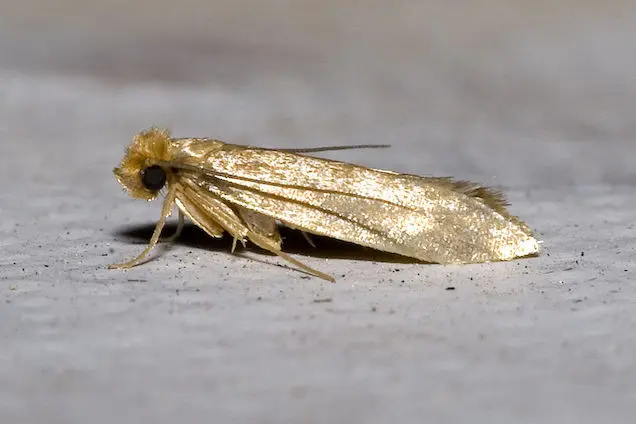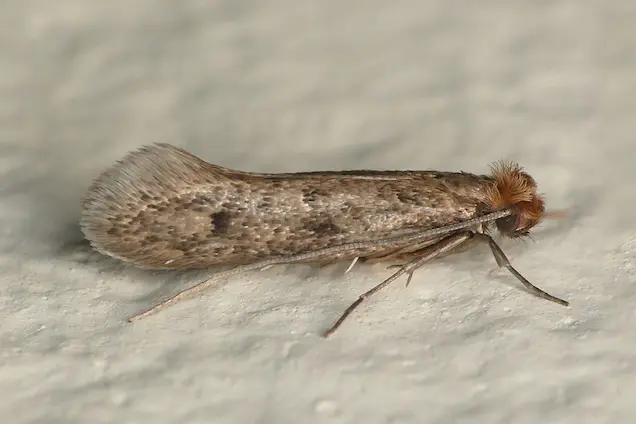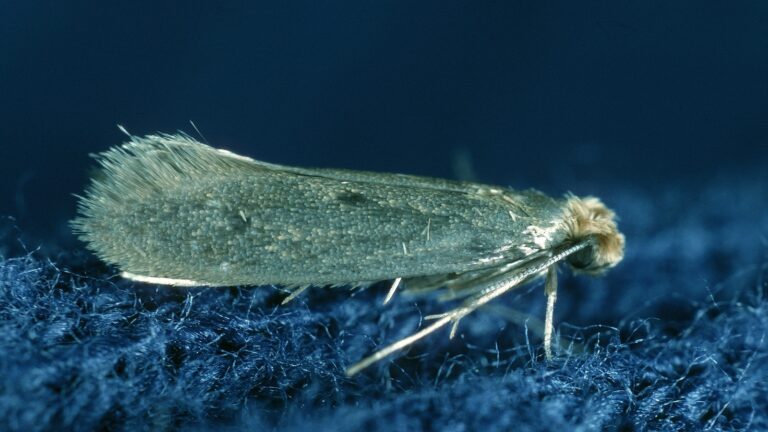Using a clothes dryer can effectively kill clothes moths and their eggs if the dryer reaches temperatures above 120°F (49°C) during a cycle. Ensure clothing is clean before drying, avoid heat-sensitive fabrics, and repeat if needed. Combine dryer use with other prevention methods like cleaning, storage, and moth repellents for best results. Regular monitoring is essential to prevent infestations.
What is the functioning principle behind dryers?
At the heart of every dryer’s efficiency lies a simple yet ingenious principle: the transformation of dampness into dryness
Clothes dryers function by using heated air to remove moisture from clothing and other fabrics.They have a heating element, typically powered by electricity or natural gas, which generates hot air.
Furthermore, the hot air is circulated through the dryer drum, where it comes into contact with the wet clothes.As the hot air passes over the clothes, it evaporates the water present in them, turning it into steam.
The moisture-laden air is then expelled from the dryer, and fresh air is brought in to continue the drying process. Moreover, expelled air may pass through a lint filter to capture lint and debris from the clothes.
The Role of Temperature in the Drying Process:
Temperature is a critical factor in the effectiveness of clothes dryers.
Higher temperatures increase the rate at which moisture is evaporated from the clothes. Most dryers offer multiple heat settings, such as low, medium, and high, to accommodate various fabric types.
Delicate fabrics are typically dried at lower temperatures to avoid damage, while sturdier fabrics can withstand higher heat. Furthermore, the heat setting selected determines the temperature the dryer will reach during the drying cycle.
To kill clothes moths and their eggs, the dryer needs to reach and maintain a temperature above 120°F (49°C) for an extended period.
How does heat affect clothes moths?

Clothing moths, particularly their eggs and larvae, are highly susceptible to heat.
The heat disrupts their life cycle by either killing them directly or rendering their environment inhospitable.
When exposed to high temperatures, the proteins and enzymes in the moths’ bodies denature, effectively killing them.
In addition, heat also accelerates the evaporation of moisture, making the environment less suitable for moths to thrive.
The Temperature Threshold for Killing Clothes Moths and Their Eggs:
Clothes moths and their eggs typically cannot survive prolonged exposure to temperatures above 120°F (49°C).
To ensure the effective eradication of clothes moths and their eggs, the dryer should reach and maintain this temperature for a sufficient duration during the drying cycle. Most standard dryer cycles, especially on high heat settings, can achieve temperatures well above this threshold, making them effective at killing clothes moths.
However, it’s important to follow recommended drying times and settings to ensure the desired temperature is reached and sustained throughout the cycle.
What are the recommended dryer heat settings for clothes moth elimination?
Discovering the optimal dryer heat settings for effectively eliminating clothes moths can help safeguard your wardrobe and home from these pesky pests.
Preparing Infested Clothing:
Cleaning Clothing Thoroughly: Before placing infested clothing in the dryer, it’s essential to clean them thoroughly. Use a lint roller or a soft brush to remove any visible moths, larvae, or eggs clinging to the fabric’s surface.
Moreover, pay close attention to seams, folds, and creases, as these are common hiding spots for moths and their eggs. Shake the clothing outside to dislodge any remaining debris.
Washing Clothing if Necessary: For heavily infested items, washing the clothing before drying can be beneficial. Use hot water and an appropriate detergent. The hot water helps to kill any remaining moths, larvae, or eggs.
In addition, ensure that you follow the care instructions on the clothing label to avoid damaging delicate fabrics.
Running the Dryer:
Recommended Drying Time: The recommended drying time can vary depending on the type and quantity of clothing and the heat setting chosen.
In most cases, running the dryer for a full cycle, which typically lasts between 30 to 60 minutes, should be sufficient to kill clothes moths and their eggs.
It’s essential to ensure that the dryer maintains a temperature above 120°F (49°C) throughout the drying cycle to effectively eliminate the moths.
Heat Settings to Use: Dryers typically offer a range of heat settings, including low, medium, and high. For clothing infested with clothes moths, it’s advisable to use the highest heat setting that is safe for the fabric type. Higher heat levels are more effective at killing moths and their eggs.
Delicate fabrics should be dried at lower temperatures to prevent damage. Always check the care label on your clothing for recommended drying instructions.
However, if in doubt, you can use a moderate heat setting and run the dryer for a longer duration to ensure effective heat exposure without risking fabric damage.
Precautions to Take with Delicate Fabrics:
Delicate fabrics, such as silk, lace, and wool, require extra care when using the dryer to avoid damage. Use the lowest heat setting that is safe for the specific fabric type. Some dryers have dedicated “delicate” or “gentle” cycles for this purpose.
Place delicate items in a laundry bag or pillowcase to protect them from abrasion and potential damage from other garments during the drying process.
Periodically check delicate items during the drying cycle to ensure they are not overheating or becoming damaged. Remove them promptly once they are dry.
How can cedar and lavender repel moths?
Cedar and lavender, seemingly unassuming, possess natural properties that act as formidable repellents against moths, ensuring your garments remain moth-free.
Cleaning and Vacuuming Closets and Storage Areas:
Regular cleaning and maintenance of closets and storage areas are crucial for preventing clothes moth infestations. Vacuum these areas frequently to remove dust, debris, and any moth larvae or eggs that might be present.
Additionally, pay particular attention to corners, cracks, and crevices where moths often lay their eggs.
After vacuuming, empty the vacuum cleaner’s bag or container promptly, as it may contain moth eggs or larvae that could hatch and reinfest the area.
Using Moth Repellents like Cedar or Lavender:
- Natural moth repellents like cedarwood and lavender have been used for centuries to deter clothes moths.
- Cedarwood contains natural oils that emit a fragrance that moths find unpleasant. Cedarwood blocks or sachets can be placed in drawers, closets, or storage containers to help repel moths.
- Lavender, with its pleasant aroma, also serves as a natural moth repellent. Lavender sachets or essential oil can be used similarly to cedar.
- Replace or refresh these repellents periodically as their effectiveness diminishes over time.
Proper Clothing Storage Techniques:
Storing clothing correctly can significantly reduce the risk of clothes moth infestations:
Use Airtight Containers: Store seasonal clothing in airtight containers, such as plastic bins with tight-fitting lids or vacuum-sealed bags. This prevents moths from accessing your clothes.
Keep Clothing Clean: Ensure that clothing is clean before storage. Moths are attracted to soiled or stained fabrics.
Avoid Overcrowding: Don’t overcrowd your closet or storage areas. Adequate air circulation helps deter moths.
Regularly Rotate Clothing: Periodically inspect and rotate your clothing, even if you’re not wearing it, to disturb potential moth habitats and check for signs of infestation.
Sunlight and Fresh Air: Sunlight and fresh air can help deter moths. When possible, air out and expose stored clothing to sunlight.
Use Moth Traps: Moth traps, which contain a pheromone to attract and capture male moths, can help monitor and reduce moth populations in your storage areas.
Clean Stored Items Before Use: Before wearing or using clothing that has been in storage, inspect and clean it to ensure there are no hidden moth larvae or eggs.
How often to check for moth signs and what to do if found?

Regular monitoring for signs of clothes moths is a crucial aspect of maintaining a moth-free environment. Clothes moths are often small and inconspicuous, making it essential to be vigilant in your observations.
Signs of a potential clothes moth infestation include:
| Signs of Clothes Moth Infestation | Description |
| Visible Adult Moths | Adult moths fly around, often active during the evening. |
| Larvae or Cocoons | Small, cream-colored larvae or silky, tubular cocoons. |
| Damaged Clothing | Holes, irregular damage patterns, or webbing on clothing. |
| Moth Fecal Pellets | Tiny, granular, sand-like droppings in folds or storage areas. |
Regular checks should be part of your routine, especially when you store seasonal clothing or textiles that aren’t used frequently.
Addressing Any Infestations Promptly:
If you detect any signs of clothes moths, it’s crucial to take immediate action to prevent the infestation from spreading and causing further damage.
Steps to address a clothes moth infestation promptly:
Isolate Infested Items: Remove infested clothing or textiles from the affected area immediately. Place them in a sealed plastic bag to prevent further contamination.
Clean Infested Items: If the infestation is limited to a few items, you can attempt to clean them. For washable items, launder them in hot water (if the fabric allows) or have them dry-cleaned.
However, non-washable items, you may freeze them to kill the moths and larvae (place them in a plastic bag and freeze for several days).
Vacuum and Clean: Vacuum the entire affected area, including corners, cracks, and crevices, to remove any eggs, larvae, or adult moths. Empty the vacuum bag or container immediately.
Use Pheromone Traps: Place moth traps in the affected area to capture adult male moths and help monitor the infestation’s progress.
Implement Preventive Measures: After addressing the current infestation, reinforce preventive measures, such as using moth repellents, proper storage, and regular cleaning and vacuuming.
Consult a Professional: If the infestation is extensive or persistent, consider consulting a pest control professional who specializes in clothes moth eradication.
FAQ’s
Can moth eggs survive the dryer?
Moth eggs cannot survive the dryer if it reaches temperatures above 120°F (49°C) during the cycle.
How long can clothes moth eggs survive?
Clothes moth eggs can survive for up to two weeks before hatching into larvae if not exposed to appropriate conditions for elimination.
What temperature kills moths?
Temperatures above 120°F (49°C) are effective at killing clothes moths and their eggs.
Is washing clothes enough to kill moths?
Washing clothes in hot water and drying them at high temperatures can effectively kill moths and their eggs.
Does sunlight kill clothes moths?
Sunlight and fresh air can help deter clothes moths, but direct exposure to sunlight alone may not reliably kill them.
How do you heat treat clothes moths?
Heat treatment for clothes moths involves using a dryer on high heat for an extended period, ensuring the temperature remains above 120°F (49°C) to eliminate moths and eggs.
How do I get rid of moths in my wardrobe?
To get rid of moths in your wardrobe, clean and vacuum the area, use natural moth repellents, store clothing properly, and monitor for signs of moths.
Final Thought
In summary, to get rid of clothes moths and keep your clothes safe, you need to do a few things. First, use your dryer correctly because it can help kill moths and their eggs with heat. But don’t stop there.
In addition, you also need to clean and vacuum your closets regularly, use natural moth repellents like cedar and lavender, and store your clothes properly.
Don’t forget to check for moths often and act quickly if you see any. By doing these things, you can prevent moths from ruining your clothes and make them last longer.

